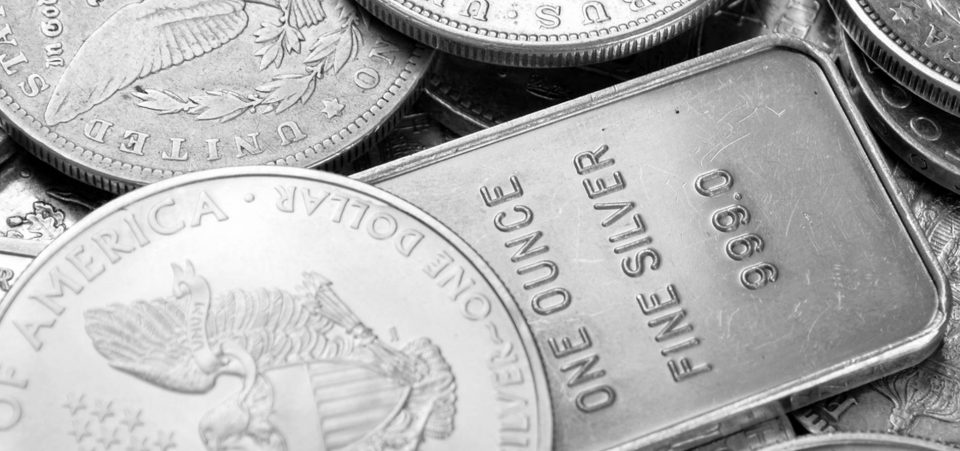A Review of Silver Prices in 2016
After a record four straight years of declines, silver prices rebounded in 2016, climbing more than 50% in the first seven months of the year. While the second half of 2016 was not kind to silver prices, there are more than enough reasons to be bullish on silver in 2017.
Precious metal bulls saw the light at the end of the tunnel in 2016, as silver prices surged more than 50% in the first half of 2016, breaking above $20.00 per ounce for the first time in two years. The same could not be said for the second half of 2016.
Chart courtesy of StockCharts.com
In the early part of the year, silver prices climbed on the heels of weak economic data and fears of a global recession. Silver prices gained further momentum in April on a weaker dollar and dovish sentiment from the U.S. Federal Reserve. Silver prices got a huge boost in late June after the surprise Brexit vote, hitting a two-year high of $21.23 in early July.
In the second half of 2016, though, silver began to lose its shine. In early October, silver fell from $18.50 per ounce to around $17.00 per ounce after a raft of (supposedly) strong U.S. economic data. Silver prices experienced a modest boost in early November over investor uncertainty around the U.S. election. But that was erased quickly.
Silver prices fell hard after the U.S. presidential election. In fact, silver prices dropped more than 10% over the next four weeks as investors digested the election results and decided that they liked the idea of a Donald J. Trump presidency. Investors decided that Trump’s proposed tax cuts and stimulus spending would be good for corporate America and the American economy on the whole. Silver prices took another hit in December when the Fed announced it was raising interest rates for just the second time in a decade.
After a strong first half in 2016, silver prices are ending the year on a serious downtrend, but still up 17.5% for the year. That’s a plus for silver bulls, but the outlook remains a little uncertain.
These Factors Could Drive Silver to $30/Ounce in 2017
With 2016 in the rear-view mirror, what can investors expect silver to do in 2017? Black swan events like Brexit and the U.S. election can impact silver prices. And additional black swan events in 2017 will most definitely have a lasting influence on silver prices in 2017.
For starters, there’s the economic action plan of incoming U.S. President Donald J. Trump. On one hand, Trump has proposed $1.0 trillion in infrastructure projects, which will be subsidized by the taxpayer. He has also proposed lower corporate taxes.
The plans are expected to fuel sustained economic growth in the world’s largest economy. But, as some have pointed out, it’s going to be interesting to see how Trump will pay for all his economic plans with a decreased tax base.
If there’s one thing that silver and gold bugs understand, it’s that economic uncertainty is good for precious metal prices.
Then there’s the Federal Reserve and interest rate hikes. In late 2015, the Fed raised its key lending rate for the first time in a decade, a little prematurely. The U.S. economy couldn’t handle it; stocks tanked and silver and gold soared. Fast-forward one year and the Fed raised rates for the second time in 10 years.
In a so-called perfect world, higher rates would translate into a stronger dollar and a pilgrimage away from silver and gold. Keep in mind, however, that the Fed has introduced five major rate increases during recoveries, and each time it resulted in a lower dollar.
Then there’s the stock market.
According to the Case-Shiller cyclically adjusted price-earnings (CAPE) ratio, which currently stands at 27.75 times average earnings, stocks are overvalued by 73%. The ratio has only stayed higher twice, for longer: in 2000 and 2007. It ended in a crash both times. (Source: “Online Data Robert Shiller,” Yale University, last accessed December 30, 2016.)
The global economy is not exactly a bellwether of confidence. Gross domestic product (GDP) growth remains stagnant in Europe, the U.K., Japan, and Australia. Meanwhile, the Canadian economy is contracting.
The fact is, there is simply no reason for the global economy to storm ahead in 2017. If anything, prolonged economic weakness, geopolitical tensions, and volatility in the financial markets will be major headwinds in 2017. These same factors will also be tailwinds for silver prices.
Finally, one has to wonder what the silver price-fixing allegations will have on silver prices in 2017. Evidence provided by Deutsche Bank AG (NYSE:DB) shows that traders from UBS Group AG (NYSE:UBS), HSBC Holdings Plc (NYSE:HSBC), Bank of Nova Scotia (NYSE:BNS), and other firms rigged the silver market from 2007 to 2013. (Source: “‘3, 2, 1, Boom’ — Silver-Fixing Allegations in a Dozen Chats,” Bloomberg, December 11, 2016.)
This could lead to a bigger investigation into the price-fixing scheme and have a lot of repercussions on silver prices in 2017.
Trading near $16.25 per ounce, silver has solid support at $14.00 per ounce and some resistance near $29.00 per ounce. All things considered, the latter seems like a possible target in 2017.







